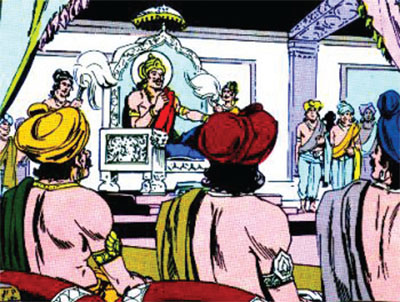
Held during the monsoons, July-August Teej is dedicated to Lord Shiva and Parvati and married women who pray for a happy and long married life. Though celebrations are held all over the state, it is particularly colorful in Jaipur where a procession winds its way for two days through the Old City. This year Teej Procession will be held on 12th August, 2010 and again on 13th August, 2010.
Thousands of people from and around Jaipur along with a number of foreign tourist throng the main roads of Jaipur to witness this colourful and historical procession which is commonly known as “Teej Maata Ki Savari”. Women wear colourful Leharia (Saree) along with traditional jwellery. Rajasthan Tourism Development Corporation is also organising four day Teej Festival from 9th to 13th August, 2010 to mark the occasion.
This festival especially attracts foreign tourists and lot of activities full of fun and frolic are organised during the festival. It is the festival of swings which are decorated with flowers and hung from trees. Young girls and women dressed in green clothes sing songs in celebration of the advent of the monsoon. The Teej idol is covered with a canopy whereas the Gangaur idol is open.
Activities
Teej is celebrated mainly by the women folk of Rajasthan. Married women who idolize Parvati for her devotion to her husband Shiva celebrate Teej. The festivity revolves around singing and dancing in praise of Parvati. The rituals allow the women to pamper and enjoy themselves, to feast, to dress in the best of cloths, finery and jewellery, in fact to look the stunning best.
All over Rajasthan, even in remote villages, Jhoolas (swings) are hung from trees and decorated with leaves and flowers. Ladies and girls can be seen enjoying on these swings, playing games, singing folk songs and applying Mehandi (henna) on their palms. In Jaipur an idol of Goddess Parvati (Teej Mata) is taken out in a royal procession from the city palace so that the general public can have a chance to pay homage to the Goddess. Antique gilt palanquins, bullock carts pulling cannons, chariots, gaily decorated elephants with silver haodas, horses, camels, brass bands, and group of dances all form a part of this grand spectacle.
The Palanquin of Goddess Paravati is carried by 8 men dressed in red color. This kilometer long procession winds its way through the lanes of the old city. Local people come in huge numbers, dress in their best traditional clothes. Space is at a premium as people perch on top of building, windows even trees to catch a glimpse of Goddess. A huge band of urchins follows the Palanquin to grab these offerings. A lot of merriment prevails during the Teej procession. Groups of men and women can be seen singing dancing and playing musical instruments. Men and women dressed as gods and Goddess also join in the procession.
History
According to Hindu mythology, on the 3rd day (teej) after the new moon in the month of Shravan Goddess Parvati went to the house of lord Shiva, her husband and was united with him.
This day is celebrated as Teej all over India and especially so in Rajasthan. Apart from its mythological origins this festival also heralds the arrival of the rainy season. In the month of Shravan the long awaited monsoon finally arrives in Rajasthan bringing relief to the parched land. Like a magic wand it transforms the hot, dusty and barren summer landscape of Rajasthan into the fertile green beehive of activity. The Teej festivities also celebrate this rejuvenation.





Be the first to comment